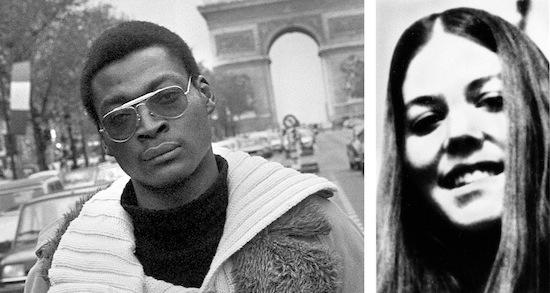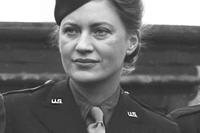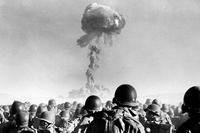
Brendan Koerner's The Skies Belong to Us is a must-read for anyone under the age of 40 who has older friends and family that like to talk about how the world is going to hell and how much more civilized things were back in the day.
Koerner tells the story of Vietnam Vet Roger Holder and his 19-year-old girlfriend Cathy Kerkow and their June 1972 hjiacking of Western Airlines Flight 701. Originally conceived as to "rescue" radical icon Angela Davis from prison and deliver her to exile in Hanoi, the crime didn't go off as planned and Holder and Kerkow eventually gained asylum in Algeria after several stops and a plane swap.

Holder served in Vietnam with the 11th Armored Cavalry Regiment and showed great skill firing M60 machine guns from a M113 armored personnel carrier. After surviving an explosion that destroyed his unit's vehicle and killed most of his fellow soldiers, Holder signed up for another tour and was promoted to Specialist Fourth Class and signed up with the Top Tigers, the 68th Assault Helicopter Company. His strong performance there led to a transfer to the 120th Assault Helicopter Company's gunship platoon, known as the Razorbacks.
What should've been a great career opportunity ended badly for Holder. He was smoking a lot of weed, his marriage back home was falling apart and he started to intensely dislike the Army brass. His career ended when he was caught with a joint during the Army's notorious war on pot and he was sent to Long Binh Jail.
When he was released, he learned that he'd been busted down in rank and that led to a meltdown that had him sent back to Fort Hood. He went AWOL and started nursing a grudge against the Army. Of course, lots of guys had similar experiences in Vietnam and almost none of them hijacked an airplane. Eventually that grudge led him to hatch the hijacking plan.
There are a lot of twists and turns from the moment Holder and Kerkow board the first flight in San Diego until they finally land in Algeria. What's surprising is that there are even more twists and turns after that landing with a cast of characters that includes Black Panther leader Eldridge Cleaver and French author Jean-Paul Sartre. The couple eventually end up in Paris before one of them disappears.
If their story wasn't mind-blowing enough on its own, Koerner's just using their tale as an example of the hundreds of hijackings that took place in the '60s and '70s. He explains how the airlines thought hijackings were just part of the cost of doing business and how their efforts in Congress blocked security measures for over a decade before escalating tragedies made it impossible not to scan all bags and passengers before takeoff.
In the end, it's obvious that no one in the government, airline business or the mainstream media could conceive of a day when hijackers would use the planes themselves as flying bombs with no regard for their own safety or the lives of their passengers. The world was in a kind of chaos after the social and political upheavals of the '60s and, for an astonishingly long period of time, the world accepted the idea that a disgruntled members of society (or airborne robbers) would take over an airplane as a way to get their stories on the evening news.
So, next time someone who was an adult back then starts complaining about how much less civilized the world is today, ask them: what was it like to come home from work and at least once a week see Walter Cronkite talking about yet another plane full of Americans that had been forced to fly to Cuba? That kind of thing is inconceivable now. Koerner's book is going to make an excellent movie. For now, let it serve as a reminder that, every once in a while, things actually do get better.
%embed1%




